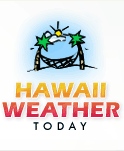Hawaiian Islands weather details & Aloha paragraphs
Posted by GlennJune 6-7 2008
Air Temperatures – The following maximum temperatures were recorded across the state of Hawaii Friday:
Lihue, Kauai – 83
Honolulu, Oahu – 87
Kaneohe, Oahu – 81
Kahului, Maui – 90
Hilo, Hawaii – 84
Kailua-kona – 84
Air Temperatures ranged between these warmest and coolest spots near sea level at 4 p.m. Friday afternoon:
Kahului, Maui – 86F
Barking Sands, Kauai – 79
Precipitation Totals – The following numbers represent the largest precipitation totals (inches) during the last 24 hours on each of the major islands, as of Friday afternoon:
0.55 Mount Waialeale, Kauai
0.16 Oahu Forest NWR, Oahu
0.02 Molokai
0.00 Lanai
0.00 Kahoolawe
0.07 West Wailuaiki, Maui
0.06 Puu Waawaa, Big Island
Weather Chart – Here’s the latest (automatically updated) weather map showing a 1032 millibar high pressure system to the northeast of the islands. This high pressure cell, along with its associated ridge, will keep moderately strong trade winds blowing across our area through Saturday…locally stronger and gusty in those windiest areas around Maui and the Big Island.
Satellite and Radar Images: To view the cloud conditions we have here in Hawaii, please use the following satellite links, starting off with the Infrared Satellite Image of the islands to see all the clouds around the state during the day and night. This next image is one that gives close images of the islands only during the daytime hours, and is referred to as a Close-up visible image. This next image shows a larger view of the Pacific…giving perspective to the wider ranging cloud patterns in the Pacific Ocean…out from the islands. To help you keep track of where any showers may be around the islands, here’s the latest animated radar image.
Hawaii’s Mountains – Here’s a link to the live webcam on the summit of near 14,000 foot Mauna Kea on the Big Island of Hawaii. The tallest peak on the island of Maui is the Haleakala Crater, which is near 10,000 feet in elevation. These two webcams are available during the daylight hours here in the islands…and when there’s a big moon rising just after sunset for an hour or two! Plus, during the nights and early mornings you will be able to see stars, and the sunrise too…depending upon cloud conditions.
Aloha Paragraphs

The end of another nice day in the islands
Photo Credit: flickr.com
Late spring trade winds will continue to grace the Hawaiian Islands, moderating our very warm afternoon temperatures at sea level. The computer forecast models suggest that this trade wind flow will prevail through the rest of this week, right on into next week. A moderately strong 1032 millibar high pressure system, to the northeast of the islands is the source of our trade wind flow now. Nothing out of the ordinary is expected, although the winds may increase just enough this weekend, in which case we would see small craft wind advisory flags going up over the windier areas around Maui and the Big Island.
The upper level trough of low pressure is now to the north of Kauai, and will soon lose whatever little bit of influence it has left here in Hawaii. This trough of low pressure has been moving by just to the north of the islands, with its associated cold pool of air aloft, and has been the source of some instability. This water vapor satellite image shows this feature to our north, spinning in a counterclockwise fashion as is moves generally westward. There was hope that it would help to bring us some much needed showers, but most of those didn’t fall in the places that needed the moisture most. We will fall back into a fairly normal trade wind weather pattern now.
~~~ We didn’t have very good luck in terms of attracting much rainfall here in the islands. It’s very clear that we needed the precipitation, to take the edge off the very dry conditions that prevail here in Hawaii now. There have been a couple of heavier showers, although, besides fall over the islands in a few places, ended up being most active over the ocean to the south of the state. There’s still a slim chance that some areas will end up with water on the ground, before this rainfall enhancing upper trough moves away soon.
~~~ Another weather related feature of note, will be the increasing surf along our leeward coasts. Late autumn storms in the southern hemisphere, down near New Zealand last week, generated a swell train of waves in our direction. This swell began arriving Friday, and will bring relatively large breaking waves to our south and west facing beaches this weekend. These breakers will be large enough that the general public may need to use caution when entering the ocean, so please be careful out there this weekend. The NWS office in Honolulu issued a high surf advisory for the south facing shores during the day Friday.
~~~ It’s after work Friday evening, as I’m about ready to leave Kihei. I just got an email from my neighbors, asking if I wanted to meet them at the putting green in Pukalani on the way home to Kula. There weren’t any new films that I was interested in seeing, so I agreed to meet them. It’s nice to putt around sunset, as the Pukalani Country Club has great views down the mountain to the ocean…and also uphill to the summit of the Haleakala Crater. I plan on going surfing early Saturday morning, taking the drive over to the Lahaina side. I have a haircut later in the morning in Haiku, which will put me in close proximity to take a nice beach walk and swim in Paia aftwerwards. This all sounds great to me, as I look forward to having a couple of days off work. I’ll be back online early Saturday, with your next new weather narrative from paradise. I hope you have a great Friday night until then! Aloha for now…Glenn.
Interesting: A team of physicists has claimed that our view of the early Universe may contain the signature of a time before the Big Bang. The discovery comes from studying the cosmic microwave background (CMB), light emitted when the Universe was just 400,000 years old. Their model may help explain why we experience time moving in a straight line from yesterday into tomorrow. Details of the work have been submitted to the journal Physical Review Letters. The CMB is relic radiation that fills the entire Universe and is regarded as the most conclusive evidence for the Big Bang. Although this microwave background is mostly smooth, the Cobe satellite in 1992 discovered small fluctuations that were believed to be the seeds from which the galaxy clusters we see in today’s Universe grew. Dr Adrienne Erickcek, and colleagues from the California Institute for Technology (Caltech), now believes these fluctuations contain hints that our Universe "bubbled off" from a previous one.
Interesting2: The numbers of Northeastern offshore spotted and eastern spinner dolphins in the eastern tropical Pacific Ocean are increasing after being severely depleted because of accidental death in the tuna purse-seine fishery between 1960 and 1990, according to biologists from NOAA’s Fisheries Service. "These estimates are encouraging because they are consistent with what we would expect to see if these stocks are recovering, now that reported fishery mortality has been dramatically reduced," said Dr. Lisa Ballance, director of NOAA’s Southwest Fisheries Science Center protected resources division. "However, we have to be careful not to jump to final conclusions. We need to resolve the uncertainties around these estimates before we can definitively say these stocks are recovering." Between 1960 and 1990, the northeastern offshore spotted and eastern spinner dolphin populations dropped to 20 percent and 30 percent, respectively, of their pre-fishery levels when dolphins were caught and died in tuna purse-seine nets. Since the early 1990s, however, the number of reported dolphin deaths has been very low because of severe restrictions on the fishery.












 Email Glenn James:
Email Glenn James: